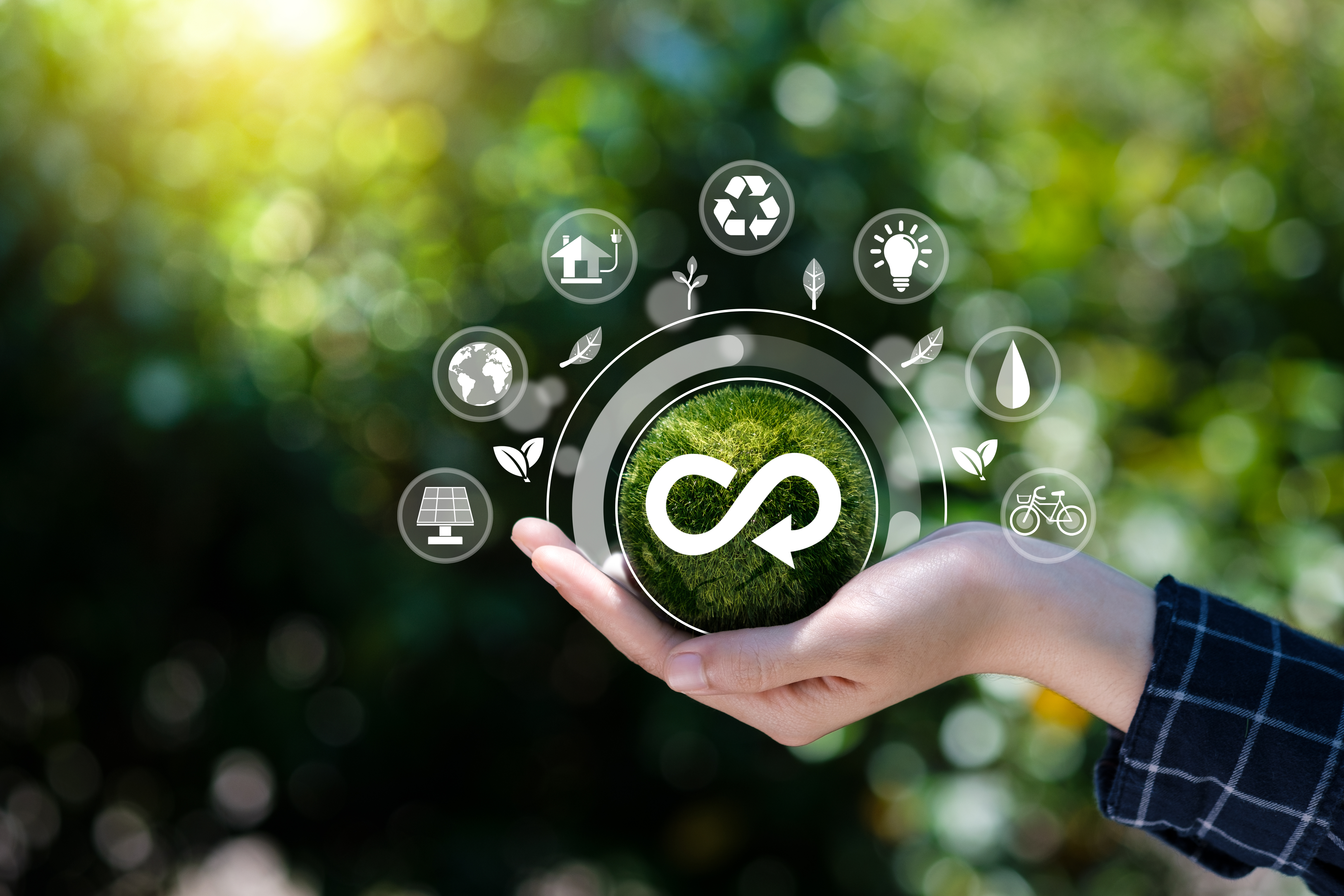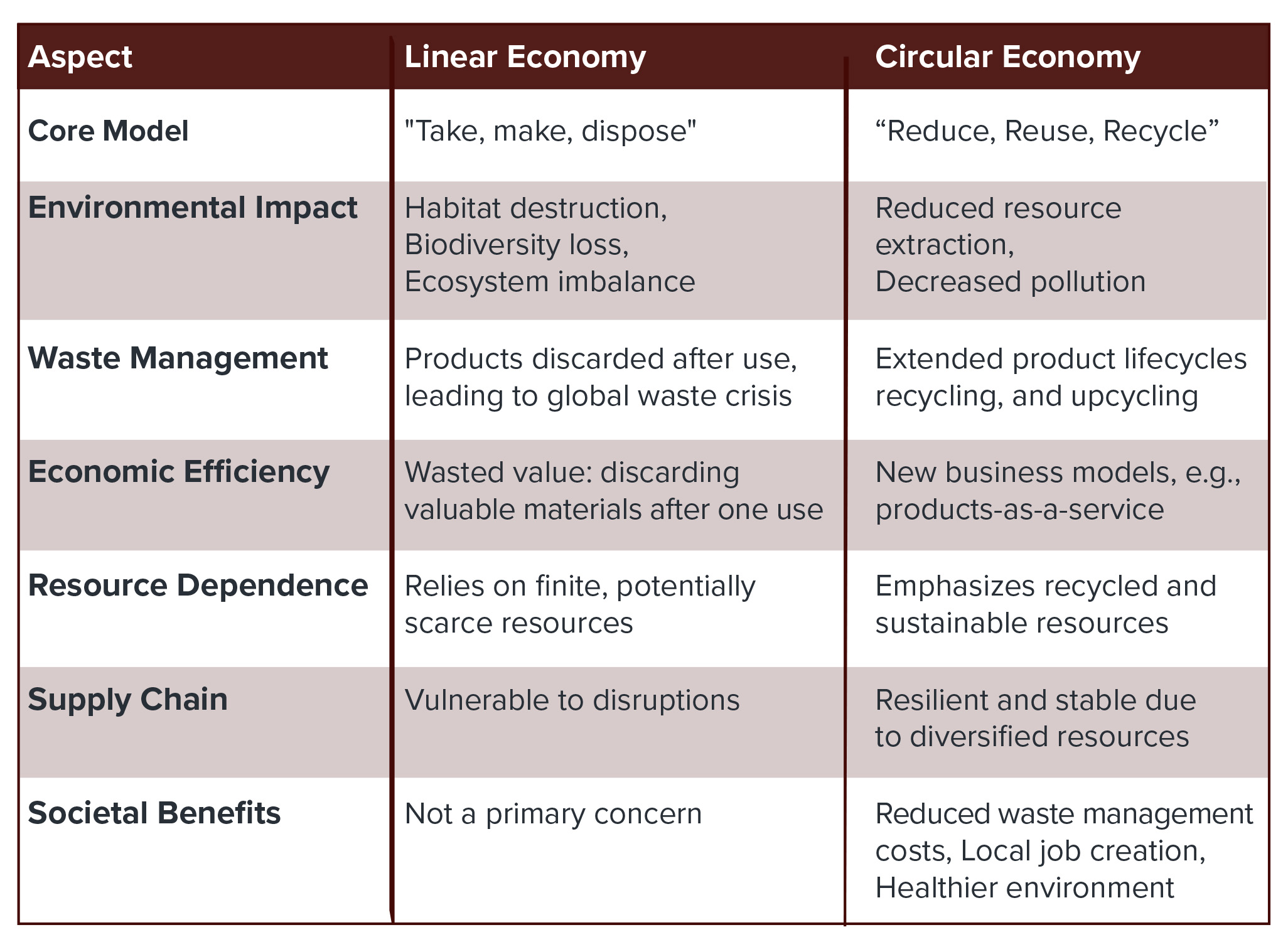
In an era where sustainability and efficient resource management are paramount, the traditional linear economy—characterized by its "take, make, dispose" approach—is increasingly under scrutiny. Enter the Circular Economy, a holistic model emphasizing waste reduction, resource efficiency, and sustainability. This article, authored in collaboration with Chat-GPT, a Generative AI-text based tool, delves into the significance of the Circular Economy, its interplay with innovative strategies like reverse logistics, and illuminates its practical application through real-world corporate examples. Let us explore how businesses are pioneering this sustainable shift, marrying profitability with ecological responsibility.
The Importance of the Circular Economy:
The linear economic model, characterized by a "take, make, dispose" pattern, has inherent challenges. It heavily depends on finite resources, leading to environmental degradation, accumulation of waste, and economic inefficiencies. This approach often results in products being discarded after one use cycle, exacerbating global waste issues, and making businesses vulnerable to resource scarcities and supply chain disruptions.
In contrast, the Circular Economy provides a sustainable alternative, focusing on minimizing waste and reusing materials. This approach emphasizes recycling, upcycling, and extended product lifecycles, offering benefits like reduced environmental impact and economic opportunities. Adopting a circular model ensures more stable supply chains, generates innovative business models like products-as-a-service, and delivers broader societal advantages such as decreased waste management costs and improved public health. By adopting this model, businesses foster a harmonious balance between consumption, ecological health, and societal prosperity.
Differences Between the Circular Economy & Linear Economy

The Interplay of Reverse Logistics and the Circular Economy:
Reverse Logistics is the process of moving goods from their typical final destination back to the manufacturer or a similar location for the purpose of return, repair, recycling, or remanufacturing. It stands in contrast to traditional logistics, which usually concerns itself with the flow of products from manufacturers to consumers.
In the context of the Circular Economy, Reverse Logistics plays a pivotal role. Here's how:
- Product Returns and Refurbishing: With the rise of the circular economy, businesses are increasingly focusing on taking back used products from consumers. Once returned, these products can be refurbished, ensuring they re-enter the market rather than being discarded. This not only reduces waste but also allows businesses to recover a part of their initial investment.
- Recycling and Material Recovery: Reverse logistics aids in efficiently collecting used products for recycling. By systematically taking back goods, companies can extract valuable materials that can be reused in new products, ensuring minimal wastage of resources.
- Sustainable Packaging: Packaging can be resource-intensive. By leveraging reverse logistics, companies can reclaim packaging materials from consumers for reuse, leading to significant reductions in packaging waste.
- Waste Minimization: Reverse logistics inherently supports waste reduction. Instead of products ending up in landfills, they can be sent back up the supply chain for repurposing, recycling, or disposal in environmentally-friendly ways.
- Consumer Engagement: Reverse logistics processes, especially when communicated well, can engage consumers more deeply. It educates them about the importance of product returns, recycling, and the broader values of the circular economy. This can lead to increased brand loyalty and a reputation for corporate social responsibility.
- Economic Efficiency: Implementing an effective reverse logistics strategy can lead to cost savings. By reusing materials and components, companies can significantly reduce their production costs. Moreover, selling refurbished products can generate additional revenue streams.
In essence, Reverse Logistics not only facilitates but actively propels the circular economy business model. It ensures products and materials remain in a continuous loop of utility, underlining the principles of reduce, reuse, and recycle. As businesses grapple with global resource scarcity and environmental concerns, integrating reverse logistics into their operations becomes not just beneficial but imperative.
Examples and Case Studies:
Patagonia: An exemplar in the clothing industry, Patagonia's "Worn Wear" initiative goes beyond traditional retail. Patagonia encourages customers to return worn or damaged items for repair, promoting longevity. Not only does this reduce waste and save resources, but it also fosters a deeper connection between consumers and the brand. Moreover, they have a resale platform for refurbished items, further pushing the envelope of a circular economy in the fashion sector.
Philips: Revolutionizing the electronics and lighting industry, Philips transitioned from merely selling light bulbs to the "lighting as a service" model. Instead of buying bulbs, customers pay for the light they use. By retaining ownership of the lighting equipment, Philips is incentivized to create durable and energy-efficient solutions. Additionally, they handle the end-of-life process of the product, ensuring recycling and reducing e-waste.
HP: Making waves in the IT sector, HP focuses on sustainable product design and recycling initiatives. Their "HP Instant Ink" program is a standout, wherein customers receive ink cartridges by mail, and used cartridges are returned in prepaid envelopes for recycling. By ensuring cartridges are used to their maximum and then efficiently recycled, HP showcases a circular approach in the printer industry.
Nespresso: Pioneering a circular approach in the beverage industry, Nespresso emphasizes recycling its single-use coffee pods. Understanding the environmental concerns associated with single-use items, Nespresso has invested heavily in setting up extensive pod collection networks and recycling facilities. Customers can drop used pods at dedicated collection points or mail them back to Nespresso, ensuring aluminum from the pods is reused, and coffee grounds are composted.
Other notable mentions include:
Dell: In the tech industry, Dell has a "Closed Loop" recycling initiative, where they reclaim plastics from old systems to create new ones. Their commitment to incorporating recycled materials into new products exemplifies circular economy principles.
IBM: IBM's Asset Recovery Solutions helps businesses manage their end-of-life technology equipment by refurbishing devices for reuse or recycling materials in an environmentally responsible manner.
These companies, spanning diverse industries, showcase the adaptability and viability of the circular economy across sectors. By integrating circular principles, they're not only reaping economic benefits but also contributing significantly to sustainability.
Creating a Circular Economy Business Model: A Step-by-Step Guide
Transitioning from a linear to a circular economy business model is a strategic move that promises sustainability and long-term profitability. If you're contemplating this shift, here are the fundamental steps to guide your transformation:
- Assessment: Begin by evaluating your current business processes. Identify areas where waste occurs and resources are underutilized. This will spotlight opportunities for improvement.
- Rethink Design: Design plays a crucial role. Consider how products can be made more durable, repairable, or recyclable. Modular designs can be especially effective, allowing for easy part replacements.
- Engage Suppliers: Ensure that suppliers are aligned with your circular vision. Opt for those providing sustainable and recyclable materials. Their cooperation will be vital for the success of your circular model.
- Product Lifecycle Extension: Invest in repair, refurbishment, and resale initiatives. By prolonging the life of products, you not only conserve resources but also foster customer loyalty.
- Innovate Business Practices: Think beyond selling products. Consider service-based models, like leasing or renting, ensuring products are returned for reuse or recycling.
- Recycling and Recovery: Set up systems for reclaiming used products and materials. Effective reverse logistics can aid in this process, ensuring materials find a second life.
- Educate and Engage: Communication is key. Ensure customers understand the value and mechanics of the circular model. Their active participation will amplify its effectiveness.
- Continuous Review: The circular economy is dynamic. Regularly review and adapt strategies to meet evolving challenges and seize new opportunities.
By systematically integrating these steps, businesses can weave the principles of the circular economy into their fabric, achieving sustainability while driving innovation and growth.
Conclusion:
The circular economy is more than just an economic model; it's a comprehensive approach to sustainable business in an ever-globalizing world. The traditional take-make-dispose paradigm is increasingly unsuitable for our interconnected, resource-constrained world. As highlighted, companies like Patagonia, Philips, HP, and Nespresso have already showcased the vast potential and adaptability of circular economy principles across diverse industries. Whether it's through extending product lifecycles, innovating business practices, or harnessing the power of reverse logistics, adopting a circular economy model not only addresses environmental and societal challenges but also uncovers new avenues for economic growth and differentiation. As more businesses recognize the intertwined nature of profitability and sustainability, the circular economy will inevitably transition from a pioneering strategy to an industry standard.
Michael R. Blumberg is a Certified Management Consultant (CMC) and President of Blumberg Advisory Group, Inc. Mr. Blumberg has established himself as an expert and leading industry authority on Reverse Logistics and Closed Loop Supply Chain Management. Mr. Blumberg, in conjunction with RLA, presents two seminars designed to provide you with critical insight and business intelligence into managing Reverse Logistics on a profitable, efficient, and productive basis.
The Seminars are targeted to mid to senior-level decision makers from Product Service/Support, 3rd Party Service Providers and OEM companies interested in understanding the latest best practices in the industry with respect to managing Reverse Logistics on an optimal basis. michaelb@blumberg-advisor.com bounced email 12/11/2019